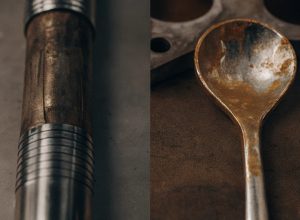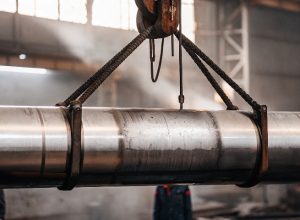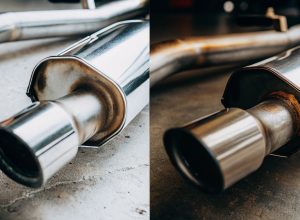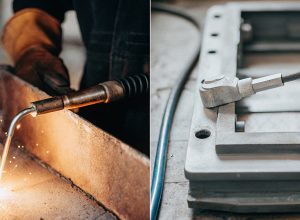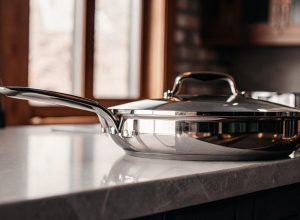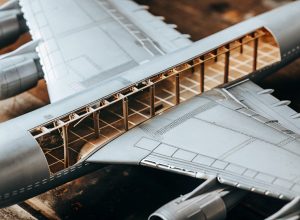Are you worried that the super-strong titanium you specified might fail? This fear can lead to costly mistakes. Let’s clarify what makes titanium brittle and how we prevent it.
Pure titanium is not brittle. Its brittleness comes from contamination with elements like oxygen and hydrogen, improper processing, or exposure to very cold temperatures. In our plant, we strictly control these factors to ensure it meets the highest strength and safety standards.
I’ve spent years working with titanium, and I know its reputation for strength seems to contradict any talk of brittleness. But like any high-performance material, its properties depend completely on how it’s made and used. A product manager like Lisa needs to know these details to speak confidently with both her engineers and her clients. It’s not about finding flaws; it’s about understanding the material to unlock its full potential. Let’s dig into the common questions I hear all the time.
Does titanium break easily?
You’re using titanium for a critical part and worry about failure. A snapped component could be a disaster for your project. Understanding its limits is key to using it safely.
No, titanium does not break easily under normal conditions. It has excellent resistance to fatigue. However, it can become brittle and fracture if it absorbs hydrogen or has internal flaws from poor manufacturing. We prevent this with strict quality control.
In my work at our plant in Baoji, preventing breakage is our top priority. The main culprit we fight is something called hydrogen embrittlement1. This happens when tiny hydrogen atoms get inside the titanium’s metal structure. They make the metal fragile from the inside out. To stop this, we use a process called vacuum arc remelting2, or VAR. Think of it as a powerful vacuum cleaner for molten metal. It sucks out unwanted gases like hydrogen before they can cause any harm.
Another risk is microstructural flaws3. These are tiny cracks or impurities you can’t see with your eyes. But they create weak spots where a crack can start. This is why our quality control is so intense. We use advanced methods like ultrasonic testing to scan every piece of titanium. This process sends sound waves through the metal to find any hidden flaws. It ensures every part we ship meets global standards like ASTM and ASME for safety and performance.
Fracture Toughness of Common Titanium Grades
| Grade | Type | Key Feature | Fracture Toughness (MPa√m) |
|---|---|---|---|
| Grade 2 | Commercially Pure | Excellent corrosion resistance | Moderate (45-65) |
| Grade 5 | Ti-6Al-4V | High strength-to-weight ratio | Good (55-98) |
| Grade 7 | Ti-Pd Alloy | Best corrosion resistance | Moderate (45-65) |
| Grade 23 | Ti-6Al-4V ELI | High purity, best for medical | Excellent (75-115) |
What breaks titanium?
You know titanium is strong, but every material has a breaking point. Not knowing these limits can lead to unexpected and costly failures in the field. Let’s identify what can damage titanium.
Titanium can be broken by certain chemicals like hydrofluoric acid, high temperatures combined with oxygen, and physical stresses like high-cycle fatigue4 or impact at very cold temperatures. Proper grade selection is the best way to avoid these problems.
Titanium has a natural, self-healing oxide layer that protects it. This layer is amazing against most chemicals. However, some things can break it down. For a product manager, it’s critical to know that chemicals like hydrofluoric acid will dissolve this protective layer and attack the metal itself. This is why we always ask our clients for a full list of chemical exposures.
High temperature is another enemy. Above 400°C (750°F), titanium becomes highly reactive. It will start to absorb oxygen and nitrogen directly from the air. This forms a hard, brittle skin on the surface called "alpha case5," which can lead to cracks. For high-temperature jobs, the equipment must operate in a vacuum or be filled with an inert gas. Physical stress is the third factor. Repeated bending and flexing can cause fatigue, just like with a paperclip. Titanium is excellent against fatigue, but it has its limits. This is why the design of the part is just as important as the material itself.
Common Failure Modes for Titanium
| Weakness Type | Cause | Our Solution |
|---|---|---|
| Chemical Attack | Hydrofluoric Acid, Dry Chlorine | Select a resistant grade (e.g., Grade 7 for acids) |
| High-Temp Embrittlement | Oxygen/Nitrogen absorption >400°C | Use in inert gas/vacuum; choose a suitable alloy |
| Mechanical Failure | High-cycle fatigue, Galling | Precision forging, proper design, surface treatments |
What is the weakness of titanium?
Every material has a downside, and you need to know titanium’s. Overlooking its weaknesses can undermine your whole design and break your budget. Let’s look at them so you can plan effectively.
Titanium’s main weaknesses are its high cost compared to steel, its difficulty to machine and weld due to its reactivity, and its tendency to gall or seize under pressure. Understanding these helps you make informed choices about your project.
Let’s be direct: the biggest weakness for many projects is cost. The raw material is more expensive than steel, but the real cost comes from processing it. Smelting, forging, and machining titanium requires huge amounts of energy and specialized equipment. I often explain to product managers that they are paying for unmatched performance and reliability, not just a piece of metal. You get what you pay for.
Its reactivity also makes it hard to work with. This is a big challenge for engineers. As we’ll see next, welding requires a very special environment. Machining it is also tough. It creates a lot of heat, which can damage both the part and the cutting tools. It requires special coolants, slow cutting speeds, and very sharp tools. This all adds time and cost to a project. Finally, there’s a problem called galling. This is when two titanium surfaces rub together under high pressure and essentially weld themselves into one piece. For bolts, valves, or any moving parts, this is a major issue we help clients design around.
Why is it hard to weld titanium?
Your team needs to fabricate a part, but they say welding titanium is a nightmare. A bad weld introduces weak spots and can compromise the whole structure. Here is why it’s tricky.
Titanium is hard to weld because it reacts aggressively with oxygen, nitrogen, and hydrogen from the air at welding temperatures. This contamination makes the weld brittle and weak. It requires an extremely clean work area and shielding with an inert gas like argon.
When you heat titanium until it melts, it acts like a sponge for impurities in the air. Even a tiny amount of oxygen is enough to ruin the weld, making it brittle like glass. You can’t just fix a bad weld; you have to cut the entire section out and start over. This makes the quality of the welding environment extremely important.
In our facility, we use Tungsten Inert Gas (TIG) welding. The process uses a shield of pure argon gas to protect the molten metal from the air. But we go further. We use a "trailing shield," which is a second nozzle that floods the weld with argon gas as it cools. This prevents contamination while the metal is still hot and reactive. For the most critical parts, like medical implants or aerospace components, we weld inside a sealed chamber that is completely filled with argon gas. You can tell the quality of a weld by its color. This is a simple visual check we use every day.
Titanium Weld Color Chart
| Weld Color | Quality | Cause of Color |
|---|---|---|
| Shiny Silver / Light Straw | Excellent | Perfect argon shielding6. No contamination. |
| Dark Straw / Brown | Good | Acceptable, but shielding could be better. |
| Dark Blue / Purple | Marginal | Minor oxygen contamination. May be rejected. |
| Grey / White Powder | Reject | Severe contamination. The weld is brittle and must be removed. |
Conclusion
Titanium isn’t naturally brittle; its strength depends on pure processing and correct handling. By understanding its weaknesses, you can use its incredible properties with complete confidence in your projects.
-
Learn about hydrogen embrittlement to ensure the integrity of your titanium components and prevent failures. ↩
-
Discover how this advanced process enhances titanium’s properties and prevents contamination. ↩
-
Learn about microstructural flaws to ensure the quality and reliability of your titanium components. ↩
-
Understanding high-cycle fatigue can help you design titanium components that withstand repeated stress. ↩
-
Learn about alpha case formation to avoid brittleness in high-temperature applications. ↩
-
Learn how argon shielding prevents contamination during welding, ensuring strong and reliable joints. ↩

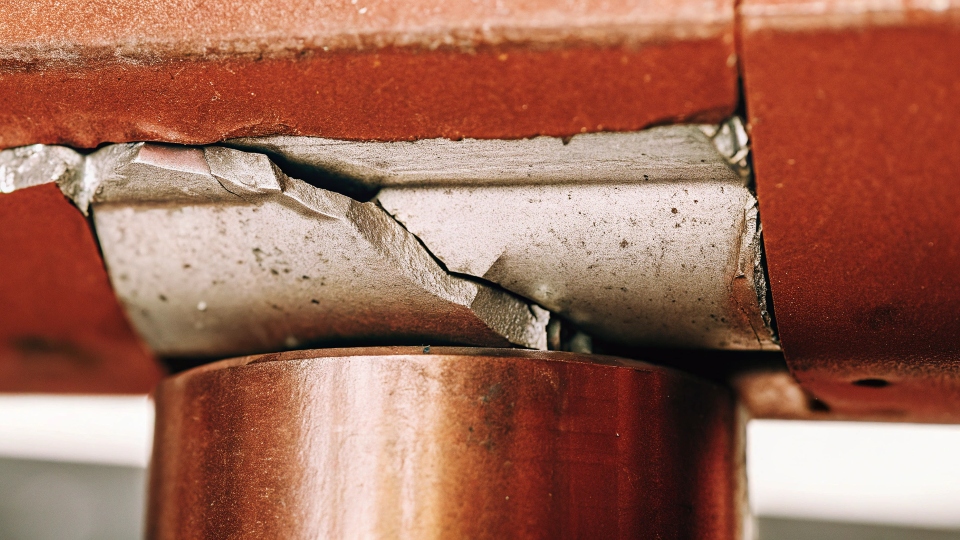
[^1] machine scanning a titanium billet for internal flaws](https://titonestmetal.com/wp-content/uploads/2025/07/no-titanium-does-not-break-easily-under-normal-.jpg)




